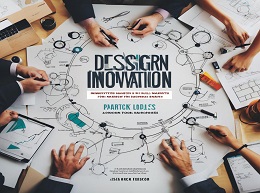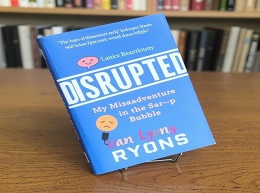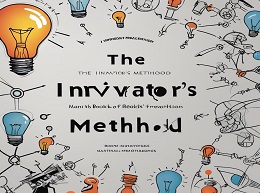Design a Better Business: New Tools, Skills, and Mindset for Strategy and Innovation

Unpacking "Design a Better Business": Tools, Skills, and Mindset for Strategy and Innovation
"Design a Better Business: New Tools, Skills, and Mindset for Strategy and Innovation" by Patrick Van Der Pijl, Justin Lokitz, and Lisa Kay Solomon is a comprehensive guide that equips businesses with the tools, skills, and mindset required to navigate the complexities of modern markets. This detailed review will explore the key concepts, practical tools, and illustrative examples presented in the book, offering a thorough understanding of how businesses can drive innovation and strategic growth.
The Core Premise: Embracing a Design Thinking Approach
At the heart of the book is the adoption of a design thinking approach, which emphasizes empathy, experimentation, and iterative learning. This methodology encourages businesses to focus on user-centric solutions, fostering creativity and innovation.
The Importance of Design Thinking
Design thinking is presented as a powerful approach to problem-solving that integrates the needs of people, the possibilities of technology, and the requirements for business success. It moves beyond traditional linear processes, encouraging a more holistic and human-centered perspective.
Example: IDEO, a global design company, famously used design thinking to revolutionize the healthcare experience by redesigning patient rooms to enhance comfort and reduce stress, demonstrating how user-centric solutions can lead to significant improvements.
Practical Tools for Business Design
The book introduces a variety of practical tools that businesses can use to implement design thinking and drive innovation. These tools are designed to be accessible and actionable, allowing businesses to apply them immediately.
The Business Model Canvas
The Business Model Canvas is a strategic management tool that allows businesses to visualize, design, and innovate their business models. It consists of nine building blocks: customer segments, value propositions, channels, customer relationships, revenue streams, key resources, key activities, key partnerships, and cost structure.
Example: Airbnb used the Business Model Canvas to pivot from a struggling startup to a global hospitality giant by identifying new customer segments and value propositions, such as offering unique local experiences.
Value Proposition Canvas
The Value Proposition Canvas focuses on the alignment between a product or service and customer needs. It helps businesses understand customer jobs, pains, and gains, and design value propositions that resonate.
Example: Slack, the team collaboration tool, refined its value proposition by identifying the key pains of email communication and offering a seamless, integrated messaging platform that addressed these issues, leading to widespread adoption.
Building the Right Skills for Innovation
In addition to tools, the book emphasizes the development of key skills necessary for driving innovation. These skills include empathy, storytelling, prototyping, and testing.
Empathy: Understanding the User
Empathy is crucial for understanding user needs and designing solutions that truly resonate. The book offers techniques for developing empathy, such as user interviews, observations, and journey mapping.
Example: Procter & Gamble (P&G) uses empathy to drive product innovation by immersing their teams in the daily lives of their customers. This approach led to the development of products like Swiffer, which addressed the pain points of traditional cleaning methods.
Storytelling: Crafting Compelling Narratives
Storytelling is a powerful tool for communicating ideas and engaging stakeholders. The book provides frameworks for crafting compelling narratives that convey the value and impact of new solutions.
Example: Apple’s product launches are renowned for their storytelling. Steve Jobs masterfully narrated the story of the iPhone, highlighting its revolutionary features in a way that captivated the audience and generated massive excitement.
Cultivating the Right Mindset for Continuous Improvement
A key theme in the book is the importance of cultivating a growth mindset, which embraces learning, adaptability, and resilience. This mindset is essential for navigating the uncertainties of innovation and strategic development.
Embracing Experimentation
The book advocates for a culture of experimentation, where ideas are tested and refined through iterative cycles. This approach reduces the risk of failure and increases the likelihood of success.
Example: Google’s “20% time” policy encourages employees to spend 20% of their work time on projects they are passionate about, leading to innovations like Gmail and Google Maps.
Learning from Failure
Failure is an inevitable part of the innovation process. The book emphasizes learning from failures and using them as opportunities for growth and improvement.
Example: Dyson’s development of the bagless vacuum cleaner involved over 5,000 prototypes. Each failure provided valuable insights that eventually led to a groundbreaking product.
Case Studies: Real-World Applications
To illustrate the practical application of its concepts and tools, the book includes numerous case studies from diverse industries. These case studies provide concrete examples of how businesses have successfully implemented design thinking to drive innovation and strategic growth.
Case Study: IBM’s Transformation
IBM’s transformation from a hardware-focused company to a leader in cloud computing and AI is highlighted as a prime example of successful business model innovation. By adopting design thinking, IBM redefined its value propositions and customer segments, leading to renewed growth and relevance.
Example: IBM’s Watson, an AI platform, was developed through a design thinking process that involved extensive user research and prototyping, resulting in a solution that addresses complex data analysis needs across various industries.
Case Study: LEGO’s Rebound
LEGO’s turnaround story is another compelling case study. Faced with declining sales, LEGO embraced a user-centric approach, engaging deeply with its community to co-create new product lines and experiences that resonated with both children and adult fans.
Example: LEGO Ideas, a platform that allows fans to submit and vote on new set ideas, exemplifies how involving customers in the innovation process can lead to successful and beloved products.
Implementing Design Thinking in Your Business
The final sections of the book provide a roadmap for implementing design thinking in any organization. This includes tips for fostering a culture of innovation, integrating design thinking into strategic planning, and measuring the impact of innovation initiatives.
Fostering a Culture of Innovation
Creating an environment that encourages creativity and experimentation is crucial for sustained innovation. The book offers strategies for building such a culture, including leadership support, cross-functional collaboration, and ongoing training.
Example: 3M’s commitment to innovation is supported by a culture that encourages employees to spend 15% of their time on experimental projects, leading to groundbreaking products like Post-it Notes.
Integrating Design Thinking into Strategy
Design thinking should be integrated into the strategic planning process to ensure that innovation efforts align with overall business objectives. The book provides frameworks for incorporating design thinking into strategy development and execution.
Example: Intuit’s Design for Delight (D4D) approach integrates design thinking into its product development process, ensuring that new solutions meet user needs and drive business growth.
Transforming Your Business with Design Thinking
"Design a Better Business: New Tools, Skills, and Mindset for Strategy and Innovation" is an essential guide for any organization looking to navigate the complexities of modern markets and drive sustainable growth. By embracing the principles of design thinking, leveraging practical tools, and cultivating the right skills and mindset, businesses can create innovative solutions that resonate with customers and deliver long-term value.
Whether you are a startup or an established company, this book provides the insights and practical guidance needed to transform your business and thrive in the dynamic business landscape. By applying the lessons from "Design a Better Business," you can unlock new opportunities for innovation and strategic success, positioning your organization for a bright and prosperous future.












